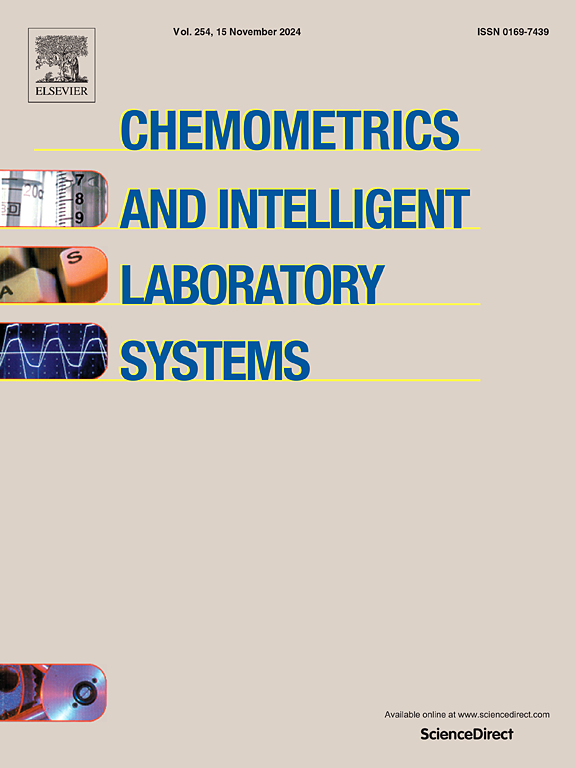DebNet结合荧光光谱技术在多种农药残留快速分类中的应用
IF 3.8
2区 化学
Q2 AUTOMATION & CONTROL SYSTEMS
Chemometrics and Intelligent Laboratory Systems
Pub Date : 2025-09-17
DOI:10.1016/j.chemolab.2025.105540
引用次数: 0
摘要
非法使用农药造成了严重的残留污染,对人类健康和环境构成严重威胁。这种情况迫切需要一种快速、高精度的多农药残留分类检测方法。虽然荧光光谱仍然是该领域的主流技术,但其分类性能往往受到光谱重叠和背景噪声的限制。为了解决这些挑战,本研究提出了DebNet,一种基于一维荧光光谱数据的深度学习模型。DebNet集成了一维卷积神经网络(1D-CNN)、长短期记忆(LSTM)网络和自注意机制,协同缓解频谱干扰。实验结果表明,DebNet对预处理数据的分类准确率达到99.83%,训练时间约为5 min。它可以快速准确地对四种高风险农药进行分类,包括环丙嗪,队长,甲草胺和噻虫嗪。总体而言,该方法为农业环境中农药残留的实时监测提供了一种轻量级、有效的解决方案。它在光谱重叠条件下的鲁棒性使其特别适合需要快速准确分类的现场应用。本文章由计算机程序翻译,如有差异,请以英文原文为准。
Application of DebNet combined with fluorescence spectroscopy for rapid multi-pesticide residue classification
The illegal use of pesticides has led to severe residual pollution, posing serious threats to both human health and the environment. This situation underscores the urgent need for rapid and highly accurate classification methods for multi-pesticide residue detection. Although fluorescence spectroscopy remains a mainstream technique in this field, its classification performance is often limited by spectral overlap and background noise. To address these challenges, this study proposes DebNet, a deep learning model based on one-dimensional fluorescence spectral data. DebNet integrates one-dimensional convolutional neural networks (1D-CNN), long short-term memory (LSTM) networks, and self-attention mechanisms to collaboratively mitigate spectral interference. Experimental results demonstrate that DebNet achieves a classification accuracy of 99.83 % on preprocessed data, with a training time of approximately 5 min. It enables fast and accurate classification of four high-risk pesticides, including cyromazine, captan, metolachlor and thiamethoxam. Overall, the proposed method offers a lightweight and effective solution for real-time monitoring of pesticide residues in agricultural environments. Its robustness under spectral overlap conditions makes it particularly suitable for on-site applications requiring rapid and accurate classification.
求助全文
通过发布文献求助,成功后即可免费获取论文全文。
去求助
来源期刊
CiteScore
7.50
自引率
7.70%
发文量
169
审稿时长
3.4 months
期刊介绍:
Chemometrics and Intelligent Laboratory Systems publishes original research papers, short communications, reviews, tutorials and Original Software Publications reporting on development of novel statistical, mathematical, or computer techniques in Chemistry and related disciplines.
Chemometrics is the chemical discipline that uses mathematical and statistical methods to design or select optimal procedures and experiments, and to provide maximum chemical information by analysing chemical data.
The journal deals with the following topics:
1) Development of new statistical, mathematical and chemometrical methods for Chemistry and related fields (Environmental Chemistry, Biochemistry, Toxicology, System Biology, -Omics, etc.)
2) Novel applications of chemometrics to all branches of Chemistry and related fields (typical domains of interest are: process data analysis, experimental design, data mining, signal processing, supervised modelling, decision making, robust statistics, mixture analysis, multivariate calibration etc.) Routine applications of established chemometrical techniques will not be considered.
3) Development of new software that provides novel tools or truly advances the use of chemometrical methods.
4) Well characterized data sets to test performance for the new methods and software.
The journal complies with International Committee of Medical Journal Editors'' Uniform requirements for manuscripts.

 求助内容:
求助内容: 应助结果提醒方式:
应助结果提醒方式:


